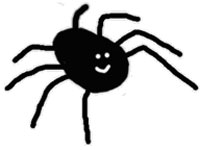Spiders are teaching us how to make better glue
Smart adhesives that work in all conditions

Of all the 45,000 known species of spider on the planet, only about 7,500 spin webs to catch their prey. Those that do, however, use a special biological glue to keep their prey in place until they're feeling hungry enough to eat them.
That glue is pretty remarkable, because it's rather unlike the glue we humans use. The effectiveness of our adhesives drops significantly in wet environments, while spider glue actually gets stickier as humidity increases.
To find out why, a team of researchers from the University of Akron and Virginia Polytechnic Institute has been studying lots of different types of spider that live in different environments - from dry to damp. "We measured the adhesion as a function of humidity and used high-speed imaging to quantify the spreading rate of the spiders' glue droplets," explained Gaurav Amarpuri, one of the team members.
Beautiful to Observe
They've found that spider glue is customised to each individual species. "We discovered maximum glue adhesion at the humidity levels at which the spider usually forages," said Amarpuri. "This is intuitive, but beautiful to observe in data." In fact, it seems they can actually change or 'tune' the viscosity of their glue to maximise prey capture.
It's hoped the lessons learnt could be used to improve the effectiveness of our own glues - looking at the combinations of proteins and salts that spiders use and copying them. By doing so, we should be able to make next-generation adhesives that work far better in a wider range of conditions.
The team presented their work at the Society of Rheology's 87th annual meeting in Baltimore.
Get daily insight, inspiration and deals in your inbox
Sign up for breaking news, reviews, opinion, top tech deals, and more.
